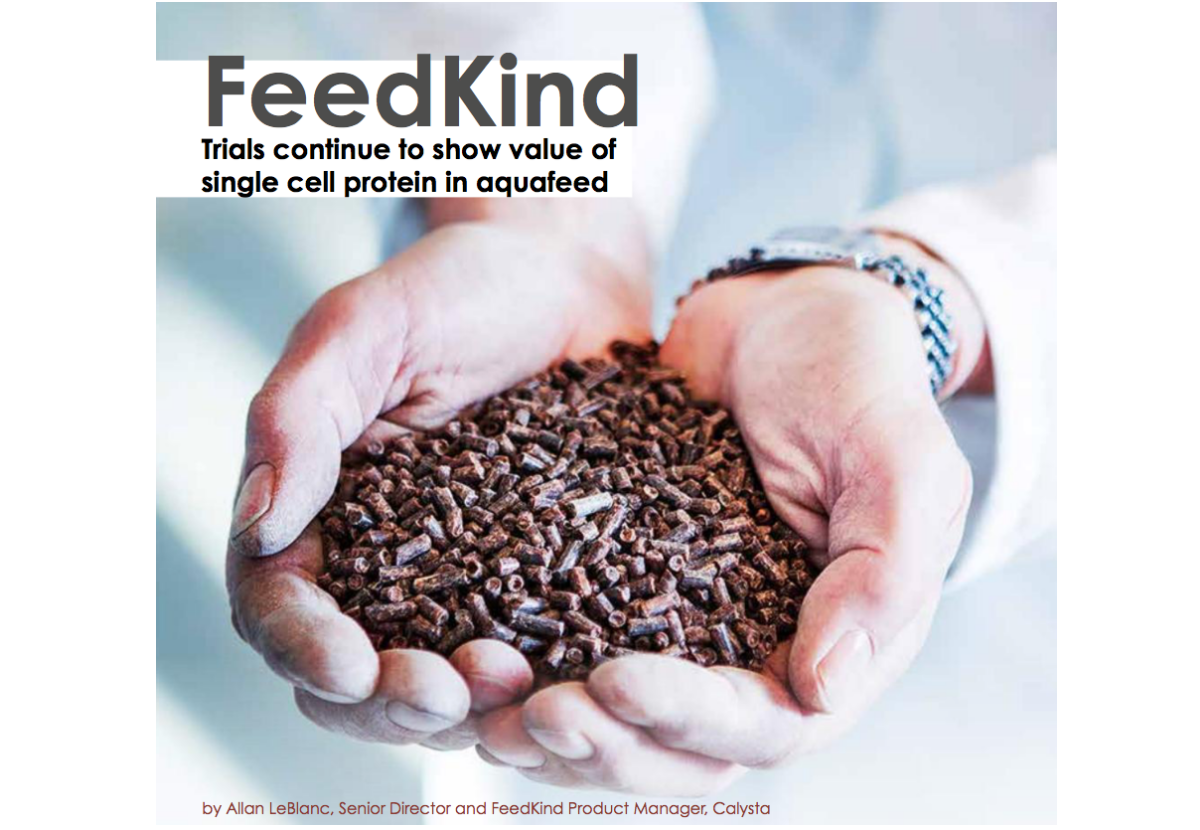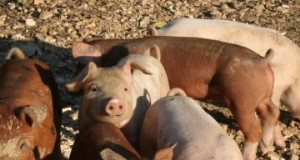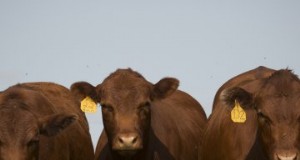欧州の養殖産業の拡大のための新たに出現した候補魚種の生物学的および社会経済的可能性の調査– DIVERSIFYプロジェクト(EU FP7-GA603121)
コンスタンティノスC.ミロナス(プロジェクトコーディネーター)とニコスパパンドロラキス(カンパチ種のリーダーであり、ワークパッケージリーダーの成長)による 海洋研究のためのギリシャセンター、 イラクリオン、 クリティ島、 ギリシャ; Aldo Corriero(Reproduction&Geneticsワークパッケージリーダー)、 バーリ大学、 イタリア;ダニエルモンテロ(栄養と魚の健康のワークパッケージリーダー)とカルメンマリアエルナンデスクルス(幼虫の畜産ワークパッケージのリーダー); FundaciónCanariaParqueCientíficoTecnológico、 ラスパルマスデグランカナリア大学、 スペイン;マリヤ・バノビッチ(社会経済学タスクリーダー)、 オーフス大学、 デンマーク; Gemma Tacken(社会経済学ワークパッケージリーダー)、 ヴァーヘニンゲン大学と研究、 オランダ;ロシオ・ロブレス(普及リーダー)、 CTAQUA、 スペイン(現在の所属Testing Blue S.L.、 スペイン)。www.modernagriculturefarm.com
序章
2013年から2018年の間に実施されたEU資金によるDIVERSIFYプロジェクトに含まれるもう1つの種は、カンパチでした(図1)。これは貴重な商業種です、 しかし、世界全体での漁獲量はわずか3つに限られています。 2009年には287トン(FAO、 2018)。カンパチの肉は消費者に高く評価されていますが、 特に寿司と刺身の場合、 そしてその市場相場は高いです、 ヨーロッパでは1kgあたり約8〜16ユーロ、日本では1 kgあたり20〜30ドルに達します。
1980年代後半、 カンパチの養殖活動が地中海沿岸で開始されました。 野生からの幼魚の捕獲と成長に基づいています(LovatelliとHolthus、 2008;オットレンギ他、 2004)。急速な成長率と世界的な市場の需要により、カンパチは非常に有望な養殖種となっています。適切な商業養殖生産、 しかし、 DIVERSIFYプロジェクトの前に開発されていませんでした。これは主に、飼育下での一貫性のない予測不可能な繁殖によるものでした。 これは、稚魚の孵化場生産の発達を妨げました。
ここでは、DIVERSIFYで得られた結果の要約を示します。 これにより、地中海および東大西洋地域でカンパチの商業生産が可能になりました。
再生
水産養殖におけるカンパチの種親管理を容易にするために、 野生の魚の重要な生活史の特徴が最初に決定されました。魚の長さは35〜40cmであることが示されました(フォークの長さ、 FL)および体重1 kg(体重、 BW)1歳で; 2歳でフロリダ州60〜70cmおよび体重3〜5kg。 3歳で80-90cmFLおよび7-10kgBW。
男性のカンパチは3歳で生殖活動を行い、女性は3〜4歳で最初の性的成熟に達します。地中海西部からの野生のカンパチ個体群の産卵期は、5月下旬から7月上旬に延長されます。地中海の海の檻で飼育されたカンパチ(図2)が他の捕獲種として扱われたとき、 彼らは貧弱な性腺の発達を示しました、 下垂体ゴナドトロピン遺伝子発現が低い、 低ゴナドトロピンおよび性ステロイド血漿濃度、 卵胞形成卵胞の閉鎖、 男性生殖細胞の増殖の減少とアポトーシスの増加(Pousis et al。、 2018; Zupa et al。、 2017a; Zupa et al。、 2017b)。
精子形成障害の結果として、 飼育下に閉じ込められたカンパチは精子の質が低いことを示しました、 精子密度の観点から、 運動性と速度、 ATP含有量と膜の完全性と同様に(Zupa et al。、 2017a)。観察された生殖機能障害は、取り扱いストレスに関連している可能性があります。 種の特定の種親の餌の欠如によって引き起こされる生殖の成熟および/または栄養の不均衡に必要な最適な条件の欠如。実際には、 飼育下で飼育されたカンパチの性腺は、野生個体と比較して脂質と脂肪酸の含有量が異なっていました。飼育技術の全体的な改善、 特に、畜産作業(魚の取り扱いや移動など)と、より良い飼料成分の配合に関連しているため(Sarih et al。、 2019)は、観察された機能障害を克服し、カンパチの繁殖成績を改善することが提案されています。
カンパチは、繁殖期に何も扱わずに地中海の海の檻で飼育されました。 生殖ホルモンゴナドトロピン放出ホルモンアゴニスト(GnRHa)のインプラントと注射でうまく治療されました(Mylonas et al。、 2018)(図3)。 GnRHaインプラントによる治療は、卵母細胞の成熟の複数のサイクルにつながる適切な内分泌経路を促進する注射よりも効果的でした。 排卵と産卵、そして良好な受精でより多くの卵子を産むことを可能にしました、 胚の生存、 孵化と幼虫の生存。
大西洋東部(グランカナリア島の南西海岸、 スペイン)、適切な環境および栄養条件下で屋内タンクで2年間飼育されました(Sarih et al。、 2019)、 通常の配偶子形成を受けることができました、 そして自発的に大量の高品質の卵を産みました(Sarih et al。、 2018)。
同じ在庫で、 テネリフェ島(スペイン)の屋外タンクで飼育された孵化場で生産されたカンパチ(体重15〜30 kg)は、通常の配偶子形成を受け、成熟するように誘導されました。 GnRHaインプラントの投与による排卵と産卵(Jerez et al。、 2018)。 GnRHaインプラントの反復投与により、5月から9月までの長期間にわたって、高品質の受精卵と生存卵が複数回産卵しました。この種では、一貫した産卵が可能になりました。 プロジェクト内での幼虫の飼育方法のさらなる開発を可能にしました。したがって、 DIVERSIFY内で実施された実験作業のおかげで、 地中海と東大西洋でさまざまな条件下で飼育されたカンパチを再現するための一連のツールが利用可能になりました。 これは、この種の大規模養殖生産に向けた基本的なステップを表しています。
栄養
カンパチのために幼虫の濃縮製品を改善するには(図4)、 カンパチ濃縮製品中の必須脂肪酸とPUFAとカロテノイドの組み合わせの最適なレベルと比率が決定されました(Roo et al。、 2019)。幼虫(孵化後17-35日、 dah)は、総脂肪酸(TFA)の5〜8%の範囲のドコサヘキサエン酸(DHA; 22:6n-3)を含むアルテミアを与えられました。 最大で約7%(1.5 g 100 g-1 DHA DM)。幼虫の必須脂肪酸(EFA)の要件は、ワムシとアルテミアの給餌期間中も同様です。 他の海水魚種の幼生について報告されているように。
DHA(1.5 g.100 g-1DHA DM)に対するブリの幼生の要件は、他の海水魚種に見られるものよりも高く、他の急成長種の要件と同様でした。 DHAレベルの増加は、取り扱いに対する幼虫の抵抗力を改善する傾向があります。濃縮エマルジョンの最高のDHAレベル(TFAの70%DHA)でさえ、アルテミア脂質(TFAの11%DHA)へのDHAの取り込みが減少しました。
それにもかかわらず、アルテミアのエイコサペンタエン酸(EPA; 20:5n-3)レベルは0.87から6.81%TFAに増加しました。 カンパチの幼虫のEPAレベルは、TFAの5.2%までしか増加しませんでした。 EPA要件の履行に関連する可能性のある飽和プロセスを示唆している。それどころか、 カンパチの幼虫のDHAレベルは直線的に増加しました。食事のDHAは頭蓋骨の異常と直線的に関連しており、食事のDHAレベルは100g-1あたり2gを超えており、骨格奇形の発生率が高くなっています。 特に頭蓋骨の発達に関連するもの。
幼虫の飼料中の総脂質(TL)に対するリン脂質(PL)の比率を上げると、成長が促進される可能性があることはよく知られています。海洋レシチン(E1)が豊富なワムシは、特にDHAが豊富な極性脂質の迅速な取り込みを示しました。胚発生におけるカロテノイドの役割はあまり確立されていませんが、 カロテノイドの存在が発生中の胚への有害な酸化的損傷を軽減するという証拠があります。
アスタキサンチンが5.3ppm未満の幼虫に餌を与えた場合、成長はわずかであることがわかりました。 一方、5.3 ppmを超える給餌レベルでは、パフォーマンスが向上し、脂質レベルが大幅に高くなりました。海洋天然レシチンLC60と10ppmのナチュロース(Cyanotech)を組み合わせた極性の豊富なエマルジョンで強化されたワムシも、幼虫の成長に大きな利点をもたらしました。 他のエマルジョンで強化されたワムシと比較した生存と福祉。
したがって、 DIVERSIFYは、カンパチの幼虫の養殖のための濃縮製品について、次の推奨事項を確立しました。アルテミアの濃縮製品のDHA10-17%TFA、 EPA 14-20%TFA、 およびDHA / EPA比1-5。ワムシ(Brachionus sp。)の場合、 濃縮製品中のDHA14%TFA、 EPA 6%TFA、 およびDHA / EPA比2.3。濃縮製品中のカロテノイドレベルは約10ppmでなければなりません。
種親の食事では、 必須脂肪酸の必要量は、産卵品質を改善するために決定されました(Sarih et al。、 2019)。 1.57%のEPA + DHAを含む飼料を与えられた種親は、高い受精率と卵の生存率を示しました。 産卵あたりの卵数と雌のkgが多い、 受精率が最も高い、 卵の生存率、 孵化率と幼虫の生存率。卵の脂肪酸組成は、種親の餌によって影響を受けることが示されました。
総脂肪酸の14〜15%EPA + DHAを含む飼料(乾燥飼料では2.5〜3%に相当)は、カンパチの種親で最高の産卵能力をもたらしました。食餌性EPA + DHA含有量を増やしても、産卵能力は改善されませんでした。 1〜1.5%の範囲の種親飼料中のヒスチジン含有量とタウリンの含有は、カンパチの繁殖成績を高めることが示されました。
幼虫の飼育
幼虫の飼育に関するDIVERSIFYの目的は、(a)集中的なシステムにおける幼虫のパフォーマンスに対するさまざまな給餌戦略の影響を研究することでした。 (b)種の工業生産のためのセミインテンシブシステムでの給餌プロトコルと飼育方法を開発する。結果は、大きな水槽での幼虫の飼育と卵幼虫の初期貯蔵量が少ないことで、カンパチの成長能力と生存率が向上したことを示しました。
25個を超える卵の貯蔵密度l-1は結果に悪影響を及ぼしました。さまざまな環境パラメータについて、 最適と見なされる範囲は、次のように要約できます。推奨されるフォトフェーズは、1〜20 dahの場合は24L:00D、21〜30 dahの場合は18L:06Dです。 800の光強度で、 1200、 3で1000および500ルクス 6、 12、 と20ダー、 それぞれ。ろ過された海水(5μm)の更新率は、1日で15〜40%の範囲で増加します。 10 dahで30〜40%、 20 dahで100〜120%、 30 dahで200〜240%は、飼育環境の質の高さを保証します。
溶存酸素は4.9〜8.2 mgl-1の範囲でした。 ただし、6.0 mgl-1を超えることが望ましい。 35〜40 psuの塩分、 7.8から8.5の間のpH、 気温は23.5〜25.0℃です。さらに、 使用する給餌プロトコルは、飼育条件と幼虫の発育に合わせて調整する必要があります。幼虫は見ることができなければなりません、 食物を摂取して消化し、 したがって、視覚と消化器系の協調的な開発が必要です。
一般に、 1dahから150-300x103セルml-1の生きた微細藻類の追加、 ワムシを1日2回以上濃縮し、 3から25dah、 3〜10 rot ml-1の密度で 12dahのアルテミアノープリウスと14-18dahの濃縮された1日齢のアルテミアEG、 その後、18 dahからの市販の離乳食(200-800μm)が良いシーケンスになる可能性があります。さらに、 PLを添加した生飼料濃縮エマルジョン、 カロテノイド、 アラキドン酸(ARA; 20:4n-6)と、エキウムオイルやブラッククミンオイルなどの免疫調節剤は、カンパチの幼虫の飼育を改善しました。 これらの特性をもたらすように濃縮すると、より良い結果が得られます。
幼虫の飼育中、 特に20dahに続いて、 これまでにテストされたすべての飼育システムで、大きなサイズの変動が発生しました。この高い変動性は、飼育されたグループを適切なサイズのクラスに早期に分類することでこれまで管理されてきました。すべての孵化場で利用可能な標準的な方法と設備を適用し、 分類手順は、分類されていないグループと比較して有意に高い生存率をもたらしました(図6)。
畜産を育てる
カンパチの成長タスクについては、 方法論の開発は、ケージ技術を強調しました(図7)。さまざまな年齢層の摂食パターンが研究されています、 一方、最適な飼育密度を定義するための試験が実施されました。さらに、 カンパチの成長能力に対する温度の影響を研究することを目的とした試験がありました。
ケージの飼育は、カンパチの商業生産にとって重要です。 しかし、やりがいがあるようです。いくつかの試験が工業規模で実施されており、すべての試験中に魚は適切な組成の商業飼料を受け入れました。 つまり、問題なく高タンパク質(魚由来)です。ネットクリーニング/交換の標準的な飼育慣行でも問題はなく、飼育密度は高くありませんでしたが、 遠海魚には約5kgm-3の値が許容できると考えられています。成長実績については、 最初の4か月間は成長率が高く(5 g d-1)、その後50%減少しました。成長の有意な変動が個体間で観察され、ほぼ100%のサイズ変動をもたらしました。 さらなる調査が必要な問題。
環境温度は、カンパチのパフォーマンスに大きく影響することが示されました。 26ºCで飼育された5gの稚魚は、22ºCまたは17ºCで飼育された魚と比較して有意に高い体重を示しました(Fernández-Monteroetal。、 2017)。形態素解析は、温度の上昇が魚の体の伸長につながることを示しました、 特に頭の。体重350gの個人の場合、 21ºCで飼育された魚は、26ºCで飼育された魚と比較して有意に高い成長を示しました。 一方、16ºCで飼育された魚は最終体重が最も低かった。
生存率は16ºCでより高かった、 しかし、3か月の実験期間全体でFCRに有意差はありませんでした。栄養素消化率は高く、 食事の質の良さを示しています。温度は腸の通過時間に影響を与える多くのパラメーターの1つですが、 それはエネルギー脂肪に影響を与えませんでした、 カンパチにおけるタンパク質と乾物の消化率。ついに、 500 gの魚は、飼料摂取量と成長に関して調査した温度(20ºCと23ºC)に有意差を示しませんでした。
魚の健康
魚の健康は、養殖魚で最適化するための重要な側面です。 Neobenedenia girellaeは、皮膚の単生類の寄生虫です。 そして、水産養殖におけるカンパチの大西洋の個体群の主な健康問題を引き起こします(図8)。この単生類は、カナリア諸島周辺の海の檻の水温上昇に関連して説明されています。 スペイン。この寄生虫とその宿主との関係についての新しい洞察は、固定が引き起こす機械的損傷を示しています、 表皮の肥厚をもたらし、 表皮細胞の空胞化、 細胞層の破壊、 杯細胞の動員、 接着領域への単核細胞リンパ球型動員。このため、 二次感染が現れ、100%の死亡率をもたらす可能性があります。
新しい予防戦略が開発されました、 マンナンオリゴ糖(MOSおよびcMOS)の食事に含めるなど、 粘液産生を高め、免疫応答を高めました。 寄生虫の負荷と成長を減らす(Fernández-Monteroetal。、 2019)。カンパチの単生類寄生虫Neobenedeniagirellaeに対する耐性を高めるために機能性食餌が処方されており、他の単生類寄生虫にも適用できる可能性があります。この食事は、高タンパク質含有物(成長の早い種に必要)と免疫賦活特性を備えた前述の添加剤の利用に基づいていました。この重要なマイルストーンは、海の檻の中のこの寄生虫の発生率を減らすためのツールを提供します。 農場でカンパチの幼魚の死亡率を減らす。
Zeuxapa seriolaeは、カンパチのもう1つの単生類の寄生虫です。 地中海地域におけるカンパチ文化の主な健康問題と考えられています。この寄生虫は鰓に付着します(図9)、 吸血性であること、 重要な鰓貧血と非効率的な酸素交換を引き起こします。その急速なライフサイクルと水温とともに増加するため、 it could cause the demise of the whole production.
Treatments with hydrogen peroxide at 75 ppm during 30 min have been reported to be efficient for killing the adults, always combined with repeated treatments after 15 and 30 days, and net changes to avoid reinfection from the released eggs. Other parasites have also been described, such as the blood fluke Paradeontacylix sp., which is a blood parasite that has been observed in cultured greater amberjack in the Mediterranean.
The proliferation inside the host circulatory system could produce obstruction of blood flow, resulting in ischemia and necrosis, and gill destruction when the eggs hatch. Penella sp.is one of the largest copepod parasites of fish, typically from swordfish (Xiphias gladius) and marine mammals. This parasite gets imbedded inside the skin of greater amberjack, それにもかかわらず、 it is not considered a problem for greater amberjack culture.
A Health Manual for greater amberjack describing different pathologies has been produced (https://www.diversifyfish.eu/amberjack-workshop.html) and is freely available in the project's website, and can be used immediately by the industry in order to improve their stock management.
Socioeconomics research
Market research in DIVERSIFY has identified two cross-cultural consumer segments of 'involved traditional', 'involved innovators' across the top fish markets in Europe (i.e. France, ドイツ、 イタリア、 スペイン、 and the UK) comprising of consumers that could be more interested in adopting new DIVERSIFY fish species and greater amberjack in particular (Reinders et al., 2016)。 The market segmentation has further shown that the future aquaculture production lays in the hand of the consumers who are more dependent on and involved in ethical and sustainability issues.
The market segmentation further allowed opportunity to co-create new product concepts from DIVERSIFY fish species at the cross-border European level. The co-creation was undertaken with consumers from the same selected market segments mentioned above (Banović et al., 2016)。 The co-created product ideas were screened out and developed into product concepts and prototypes. From the selected concepts a few showed promising future if developed with greater amberjack.
One (i.e. fresh fish steak) was selected for the greater amberjack product prototype involving lower levels of processing (Figure 10). The physical prototype was selected based on the market potential, the consumer value perceptions, physicochemical characteristics of raw material, the technical properties of the products and the process, and the availability of similar products in the market. The undertaken research showed that product from greater amberjack was in all cases and across all investigated countries the best-perceived and -preferred product over all the other products developed from meagre, pikeperch, and grey mullet, always providing alignment with consumer expectations and consumption experience.
さらに、 it has been found that the products with a lower degree of processing and those characterized by the distinctive fish sensory properties, as the product from grater amberjack, were those products that had higher consumer acceptance. Products with higher degree of processing were more accepted by the consumers who do not like fish because of its taste, におい、 as well as the presence of bones. This shows that the presence of different processed product alternatives could be a good solution to be able to cover more consumer segments.
The developed product concept from greater amberjack was further tested for optimal labelling attribute combination on packaging and price range. The experiments were undertaken in the same selected countries and with the same product from greater amberjack developed into the previously tested prototype.
Based on this study it was concluded that country of origin and price are the attributes that drive the product acceptance, followed by quality certification (i.e. Aquaculture Stewardship Council - ASC label), while nutrition and health claims had a varying effect dependent on the country. The use of ASC label as the marketing signal to consumers that the product is coming from a controlled, certified and responsible aquaculture actually increases the likelihood of consumers adopting this product.
一方で、 the use of nutrition and health claims actually assist European consumers to make more informed choices aligned with their preferences and stimulate health-related behaviour.しかし、 nutrition and health claims are needed to be customized based on the target country. This research has also pointed to different segments of people how are nutrition conscious, ethnocentric, price conscious and eco-conscious, further suggesting possible targeted marketing campaigns that could be designed and used to further facilitate adoption of new fish species and greater amberjack in particular. Willingness to pay has also been estimated for the product from greater amberjack across investigated countries showing how the product should be priced.
The results from the virtual online market test also showed good acceptance of greater amberjack and its product in the same markets. This is related to two findings.初め、 the percentage of first-time buyers of greater amberjack product was above 10%. Even if one assumes that not every one of these first-time buyers might like the flavor of the new fish, it does inform that the new product has the serious potential on the market. 2番、 even those consumers that had not selected products from greater amberjack in the online market test, after receiving additional information decided to switch, with this number being above 11%.ついに、 when the numbers of people that directly or indirectly purchased greater amberjack have been aggregated, a total acceptance rate of 1/4 was estimated with slight variations depending on the country (i.e.southern versus northern countries).
Based on the results obtained in DIVERSIFY, greater amberjack shows very promising market prospects, given its superior sensory characteristics, good consumer acceptance, and price margins.それにもかかわらず、 its introduction would have a larger impact if done country by country instead of general pan-European level. The developing outlooks per country vary, as in some countries early adopters easily try new fish species, while in other countries consumers' need extra marketing efforts. In all investigated countries, introduction of the new products with a reference to already familiar products advances consumer acceptance.
したがって、 the production of products from greater amberjack at an industrial scale is a feasible task (Figure 11) if raw materials of good quality are used, as sensory properties are decisive factor for consumers, especially in new fish species.さらに、 good production practices should be applied with proper traceability, as this further influence overall product acceptability. The above factors are necessary and adequate conditions for achieving high quality and economically satisfactory products.
A technical 'Production Manual' for greater amberjack, has been also produced by the project and is freely available in the project's website (https://www.diversifyfish.eu/amberjack-workshop.html), and can be used by the industry to begin investigating the potential of greater amberjack as an alternative marine species for European warm-water aquaculture.
参考文献
Banović, M., Krystallis, NS。、 Guerrero, L., Reinders, M.J., 2016. Consumers as co-creators of new product ideas:An application of projective and creative research techniques. Food Research International 87, 211-223.
FAO, 2018. The State of World Fisheries and Aquaculture 2018 - Meeting the sustainable development goals. Food and Agriculture Organization of the United Nations, Rome, 210 pp.
Fernández-Montero, NS。、 Caballero, M.J., Torrecillas, NS。、 Tuset, V.M., Lombarte, NS。、 Ginés, R.R., Izquierdo, M., Robaina, L., Montero, D., 2017. Effect of temperature on growth performance of greater amberjack SERIOLA DUMERILI Risso 1810) Juveniles. Aquaculture Research 49, 908-918.
Fernández-Montero, Á., Torrecillas, NS。、 Izquierdo, M., Caballero, M.J., Milne, D.J., Secombes, C.J., Sweetman, J., Da Silva, P., Acosta, NS。、 Montero, D., 2019. Increased parasite resistance of greater amberjack (Seriola dumerili Risso 1810) juveniles fed a cMOS supplemented diet is associated with upregulation of a discrete set of immune genes in mucosal tissues. Fish &Shellfish Immunology 86, 35-45.
Jerez, NS。、 Fakriadis, I., Papadaki, M., Martín, M., Cejas, J., Mylonas, C.C., 2018. Spawning induction of first-generation (F1) greater amberjack Seriola dumerili in the Canary Islands, Spain using GnRHa delivery systems. Fishes 3, 1-22.
Lovatelli, NS。、 Holthus, P.F., 2008. Capture-based aquaculture; Global overview. Food and Agriculture Organization of the United Nations, Rome, 298 pp.
Mylonas, C.C., Fakriadis, I., Papandroulakis, N., M., P., Sigelaki, I., 2018. Broodstock management and spawning induction of greater amberjack, Seriola dumerili reared in sea cages in Greece, 11th International Symposium on Reproductive Physiology of Fish, Manaus, ブラジル。
Ottolenghi, NS。、 Silvestri, NS。、 Giordano, P., Lovatelli, NS。、 新しい、 M.B., 2004. Capture-based Aquaculture. The fattening of eels, groupers, tunas and yellowtails. Food and Agriculture Organization of the United Nations, Rome, 308 pp.
Pousis, NS。、 Mylonas, C.C., De Virgilio, NS。、 Gadaleta, G., Santamaria, N., Passantino, L., Zupa, NS。、 Papadaki, M., Fakriadis, I., Ferreri, NS。、 Corriero, NS。、 2018. The observed oogenesis impairment in greater amberjack Seriola dumerili (Risso, 1810) reared in captivity is not related to an insufficient liver transcription or oocyte uptake of vitellogenin. Aquaculture Research 49, 243-252.
Reinders, M.J., Banović, M., Guerrero, L., Krystallis, NS。、 2016. Consumer perceptions of farmed fish:A cross-national segmentation in five European countries. British Food Journal 118, 2581-2597.
Roo, J., Hernández-Cruz, C.M., Mesa-Rodriguez, NS。、 Fernández-Palacios, H., Izquierdo, M.S., 2019. Effect of increasing n-3 HUFA content in enriched Artemia on growth, survival and skeleton anomalies occurrence of greater amberjack Serioladumerili larvae. Aquaculture 500, 651-659.
Sarih, NS。、 Djellata, NS。、 La Barbera, NS。、 Fernández-Palacios Vallejo, H., Roo, J., Izquierdo, M., Fernández-Palacios, H., 2018. High-quality spontaneous spawning in greater amberjack (Seriola dumerili, Risso 1810) and its comparison with GnRHa implants or injections. Aquaculture Research 49, 3442-3450.
Sarih, NS。、 Djellata, NS。、 Roo, J., Hernández-Cruz, C.M., Fontanillas, NS。、 Rosenlund, G., Izquierdo, M., Fernández-Palacios, H., 2019. Effects of increased protein, histidine and taurine dietary levels on egg quality of greater amberjack (Seriola dumerili, Risso, 1810). Aquaculture 499, 72-79.
Zupa, P., Fauvel, NS。、 Mylonas, C.C., Pousis, NS。、 Santamaría, C.A., Papadaki, M., Fakriadis, I., V., NS。、 2017a. Rearing in captivity affects spermatogenesis and sperm quality in greater amberjack, Seriola dumerili (Risso, 1810). Journal of Animal Science 95, 4085-4100.
Zupa, NS。、 Rodríguez, NS。、 Mylonas, C.C., Rosenfeld, H., Fakriadis, I., Papadaki, M., Pérez, J.A., Pousis, NS。、 Basilone, G., Corriero, NS。、 2017b. Comparative study of reproductive development in wild and captive-reared greater amberjack Seriola dumerili(Risso, 1810). PLoS ONE 12, e0169645.
This 5-year-long project (2013-2018) has received funding from the European Union's Seventh Framework Programme for research, technological development and demonstration (KBBE-2013-07 single stage, GA 603121, DIVERSIFY). The consortium includes 38 partners from 12 European countries –including 9 SMEs, 2 Large Enterprises, 5 professional associations and 1 Consumer NGO- and is coordinated by the Hellenic Center for Marine Research, Greece. Further information may be obtained from the project site at 'www.diversifyfish.eu'.













